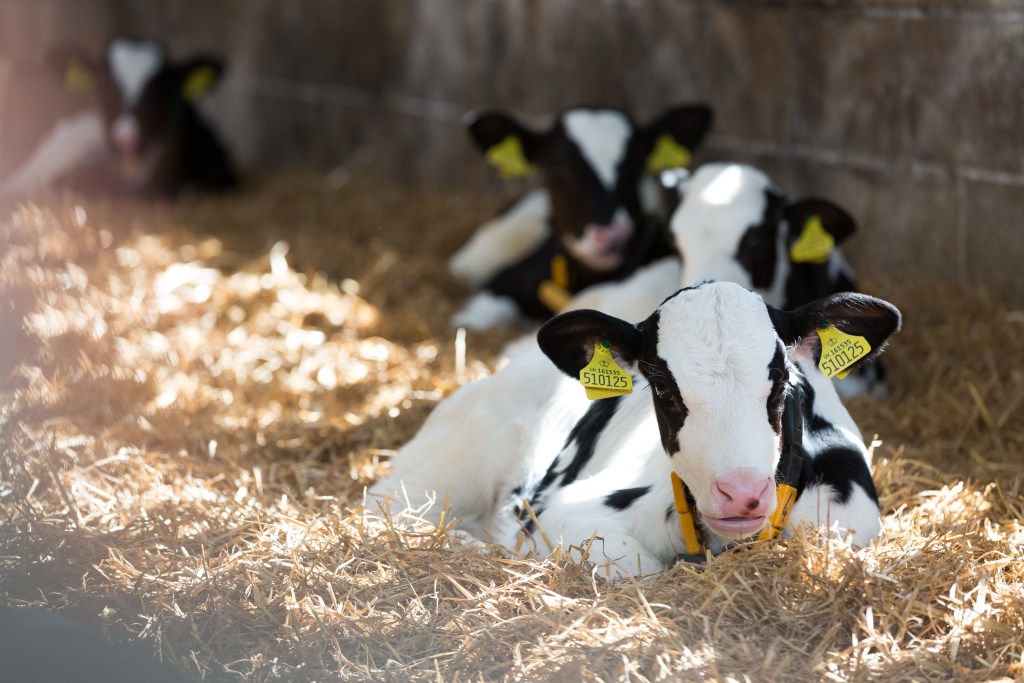Jul 6
While genomic testing provides a wealth of information on individual animals, the value is in the interpretation of the data and the effective application of a breeding strategy based on the results.

The introduction of genomic testing in sires has transformed dairy breeding by identifying high genetic merit bulls earlier. And now female genomic testing is commercially viable for many producers to take advantage of as part of their breeding strategy. By using a tissue or hair sample accompanied by pedigree information to analyse the DNA sequence, a genomic test gives the most comprehensive picture of an animal’s genetic make-up. But the amount of data generated is considerable and can be overwhelming, and as a result is often not used to its full potential.
“Genomic testing allows us to realise the true genetic merit of females in the herd,” says Genus ABS’ Liam Healy. “Used correctly, it allows more precise selection of females to breed replacements from, meaning producers can accurately target the animals that rank higher against their own farm-specific breeding goals.” He stresses that genomic testing is not just about creating data – interpreting the information is key. And, used effectively, this enables better-informed breeding decisions to be made and can accelerate a herd’s rate of genetic progress. The genomic data is more reliable compared to breeding decisions based on parent average or performance,” he says. “The reliability of genomic testing is around 70% compared to 33% or less for parent averages.
Breeding decisions
“Around 50% of inherited genes come from the sire with the other 50% coming from the dam, but we cannot be sure of the contribution from the four grandparents. As a result, some females are not as good as expected compared to parent averages while others are better. “When combined with incorrect parentage it is not unusual for genomic evaluations to change 30% of breeding decisions in a herd, which will have a huge impact on genetic progress.”
Mr Healy stresses that while genomic testing has the ability to fundamentally alter breeding decisions, it is how genomic data is used in practice that creates the value. “Simply knowing who your best and worst animals are and doing nothing differently with the information is a missed opportunity.
“Genomic testing produces a vast amount of data that needs interpretation, and this is something many producers will not be familiar with. Those who have tried genomic testing in the past found there was inadequate support to help interpret the results, making it difficult to fully utilise the information to underpin better decision making,” he says.

Genetic progress
Professional interpretation and the development of a breeding plan is key to getting the best from genomic testing and this is why Genus ABS has developed GENEadvance. The service utilises the accuracy of genomic data to make better breeding decisions and, by helping to calculate the number of replacements needed, targets the use of sexed dairy semen to accelerate genetic progress. This improves the return on investment of genetics.
Mr Healy says genomically testing all the animals in the herd is unlikely to give the best return on investment, adding that most cows will not be good enough to produce a heifer calf once they enter the herd, so the gain from genomically testing cows will be small.
“With a breeding strategy based on using sexed dairy semen and beef semen, producers don’t need to use a high proportion of the herd to breed replacements. To maximise return on investment, test all heifers at least two months before their first-breeding date. The two month lead time will ensure results are back in time to help make informed breeding decisions.
“If you test all heifers up to the point of calving you will get the best data on what should be your best animals, but the additional cost of testing means the return on investment will take longer.
“All females in the herd should then be ranked on one index, as it is possible that some cows will have higher genetic merit than the heifers. A great place to start is £PLI, with further refinement of the ranking based on farm-specific goals. Whether sourced from genomics or parental averages, this method of ranking allows producers to pick the best animals to breed replacements from. Just ranking heifers against heifers can be a missed opportunity.”
Mating program
Armed with the best-ranking females, Mr Healy says producers are halfway to the best breeding strategy for the herd. It is then essential to make sure these females are bred to highest genetic merit sires.
“A great heifer put to the wrong great sire will not always produce the optimal calf. Using a detailed mating program, such as GMS, which takes account of individual herd’s specific breeding objectives, will ensure the most appropriate sire is identified for each top-ranked breeding animal. This increases the return on investment from the breeding strategy and offers accelerated genetic progress.
“We want to help ensure that producers optimise the potential of genomic testing to their business,” he adds. “By providing interpretation of the genomic testing results we are able to rank the herd on genetic merit, and use this to build a personalised breeding plan making full use of the Genus ABS’ dairy and beef genetics. Regular genetic reviews are used to assess progress and revise plans accordingly.
“Genomic testing, which is used as part of an overall dairy breeding strategy provides the next step to accelerate genetic progress.”
Phil Eades –
CowManagement magazine 2022
www.cowmanagement.co.uk


